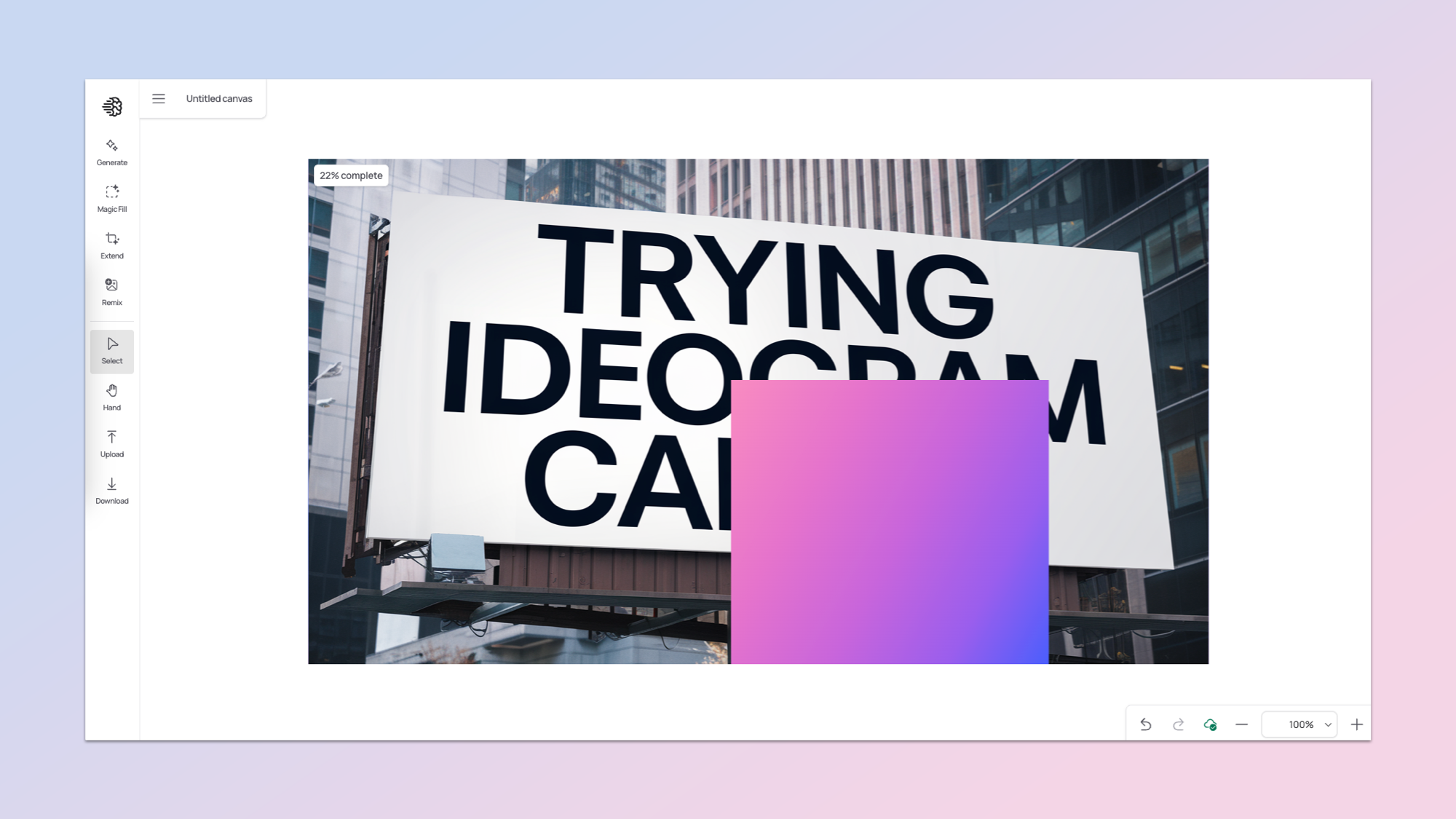Ideogram drops new canvas editor — I got early access and it's a game-changer

Ideogram just became the most recent artificial intelligence platform to embrace a canvas approach to generating content. Its latest upgrade comes in the form of an editor that lets you paint any element of an image, stack images, or generate a new one.
There seems to be a growing trend among AI companies to find new ways that allow users to interact with their models beyond the simple text or chat input. Anthropic led part of this charge with Artifacts in Claude, then OpenAI picked it up with its own text and code editing Canvas.
I've spent some time experimenting with Ideogram Canvas and I'm impressed with its flexibility. Unlike other web image editor approaches that use AI, Ideogram includes layering, stacking each new generation and changes you make on top of the original. This makes it much easier to revert or to compare changes between one version and the next.
It builds on some of the concepts we saw launched by Midjourney in its own editor, including expanding the canvas or painting around a specific element and changing it with a simple text prompt. I've used both and I think Ideogram's is a better implementation.
How does Ideogram Canvas work?

Canvas is available as a standalone image generation interface, or where you can send images you've previously generated. It lets you more easily see the image and make changes compared to a text input field.
A spokesperson explained: "Ideogram Canvas is your endless creative board for organizing, generating, and editing images. You can upload or generate images, and then seamlessly edit or extend them with Ideogram's industry-leading inpainting and outpainting tools.”
The ability to upload your images and edit/extend them using Ideogram is a powerful feature not widely available from other platforms. Apparently, Midjourney is working on enabling this capability in its editor soon, but for now it's not possible.
Get instant access to breaking news, the hottest reviews, great deals and helpful tips.
This is particularly powerful in the realm of graphic design as Ideogram's text rendering capabilities are unlike any other model I've tried. For example, I was able to upload an image I'd created and have it add text to the frame in seconds.
You could also give it your own image and remix that image, for example, changing the color of your cat or putting your cat in space. I don't actually own a cat, but I found that most AI tools are better at generating images of cats than they are of dogs.
One of my favorite features of Ideogram Canvas is the ability to rename the canvas you are working on and create new ones. This creates a 'project' style system for AI image.
Can you still use Ideogram through a text prompt?

The core platform of Ideogram hasn't actually changed; this is just a new feature that's been tacked on. There is a redesign so your generations appear down the side and the button for Canvas appears down the side, which is closer to the way the Midjourney app looks, but the functionality is the same.
The other new feature I noticed in addition to the redesign and Canvas is a new anime customization joining the existing design, 3D, and realistic options. This is a tool that further refines and enhances your prompt to make it appear more like an anime image.
One word of caution: if you do use Canvas and, like me, you're someone that prefers a well-ordered archive of generations previously made, every change you make to an image in Canvas will appear as a new generation in your list — so make use of the filters.
More from Tom's Guide
- Forget ChatGPT and DALL-E — now Google Bard can generate images
- Google launches new standalone AI image generator called ImageFX and promises ‘highest quality images yet’
- I put Google Search AI image generator to the test on adding text to images — it was better than expected

Ryan Morrison, a stalwart in the realm of tech journalism, possesses a sterling track record that spans over two decades, though he'd much rather let his insightful articles on AI and technology speak for him than engage in this self-aggrandising exercise. As the former AI Editor for Tom's Guide, Ryan wields his vast industry experience with a mix of scepticism and enthusiasm, unpacking the complexities of AI in a way that could almost make you forget about the impending robot takeover.
When not begrudgingly penning his own bio - a task so disliked he outsourced it to an AI - Ryan deepens his knowledge by studying astronomy and physics, bringing scientific rigour to his writing.









